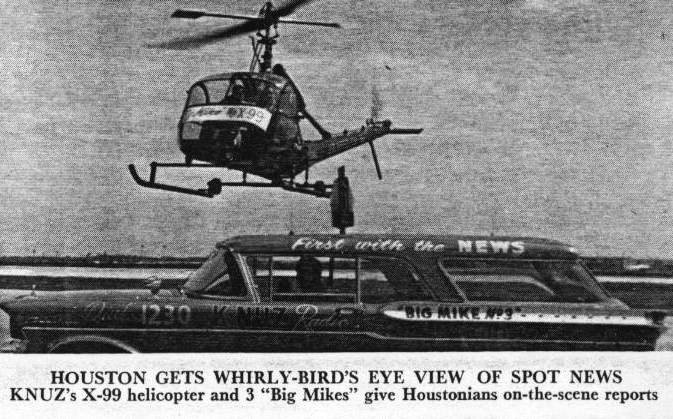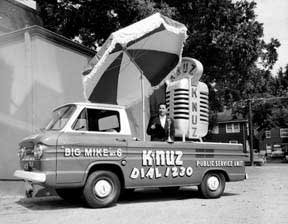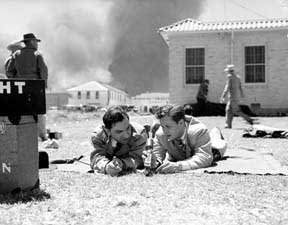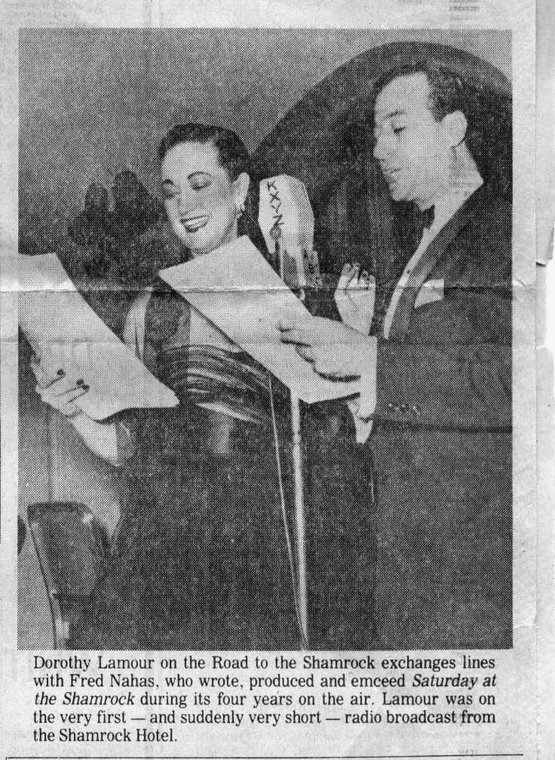Howard Kemper - KXYZ - 1940
Howard Kemper was an announcer on KXYZ in 1940. He was also an amateur photographer. Recently his son John discovered some old negatives and with the assistance of grandson Michael Kemper restored them and shared them with me.
John Kemper supplied biographical and career information about his dad which I am copying here as submitted since it needs no editing.
So Howard Kemper's time in Houston radio was brief but these pictures are priceless. Thanks again John and Michael.
Howard Kemper was from Abilene. He wrote to his younger brother in college there about his job at KXYZ.
Howard Kemper reading the news and making an announcement. KXYZ was an NBC Blue affiliate, perhaps explaining the pretty blue stationery. Notice what appears to be a pass-through along the bottom of the window. Perhaps the headphones were handed through?
Getting ready for that 15 minute news review at 2 am? Looks like teletype machines didn't change much over the years.
An unidentified individual at a control board in a very tight space. No microphone so is this an engineer? Did engineers have to show up in suit and tie in those days? I cannot tell if the second board looks out over another studio (or indeed, the one the man is sitting at). Any information that anyone can supply, including the identity of this individual, will be appreciated.
There isn't much evidence of soundproofing in any of these pictures.
The next three pictures are of the equipment room.
Close-up of one the transmitter tubes from the preceding photo.
Up on the roof of the Gulf Building, tallest building in town at 37 stories.
Looking south along Main Street from the roof of the Gulf building.
Looking north from the Gulf Building roof along Main Street toward the bridge over Buffalo Bayou and out over the North side.
The Gulf Building was completed in 1929 at 712 Main Street @ Rusk. At 37 stories it was the tallest building west of the Mississippi at the time and the tallest building in Houston until 1963 when the Humble Oil and Refining Company/Exxon building was completed. It is now known as the JP Morgan Chase Building.
The 18 story Rice Hotel was completed in 1913 at the corner of Main and Texas, 2 blocks north of Rusk, on the site of a former capitol of Texas. It housed the studios of KTRH for many years and now houses the Rice Apartments.
KXYZ had been operating on the 1440 frequency with 250 watts of power since 1932 when the operations of KXYZ & KTLC were consolidated and KTLC ceased to operate. By 1935, power increased to 1 kilowatt. The transmitter had moved to the Chronicle building, Texas at Travis, in 1928 and in 1930 to the Gulf building. The main studios moved from the Texas State Hotel on Fannin at Rusk to the Gulf Building in 1935. Thus, the studios pictured above were still quite new. Just when Harris County Broadcast Co. took over the station from William John Uhalt is missing in the FCC data I have located so far, but the company retained ownership of the station until December, 1948, when it was taken over by Glenn McCarthy’s Shamrock Broadcasting. The Uhalt Electric Company had been the original licensee (call letters KTUE) on August 24, 1926.
As a result of the North American Radio Broadcast Agreement in March 1941, KXYZ moved to the 1470 frequency and a couple of years later to 1320, where it still operates. In 1943, KXYZ was authorized to relocate its transmitter facilities to Deepwater, Texas, subsequently identified in FCC records as ‘southwest of the intersection of Route 225 and South Avenue, Pasadena, Texas” and again as 2800 Powers Drive, Pasadena. This was the site of the joint KTRH/KPRC transmitter facility, originally the location of KTRH when it first moved to Houston from Austin. KTRH was exiting the facility. Completion of all the construction needed took a couple of years and KXYZ wound up on the 1320 frequency with 5 KW daytime, 1 KW nighttime power.
The former main transmitter at the Gulf Building was licensed as an auxiliary transmitter, limited to 1 KW power, and was activated for use during the construction delays.
KXYZ moved its operations (studios, offices) out of the Gulf Building to the 16th floor of the Fannin Bank Building at Holcombe and Main in October, 1963.
The longtime transmitter location on Texas 225 southeast of Houston, used by several local operators since 1930, became too valuable for industrial purposes and was sold in the last few years. KXYZ now transmits from a triplex set-up with sister stations KBME (790) and KPRC (950), all owned by IHeart media.








































































